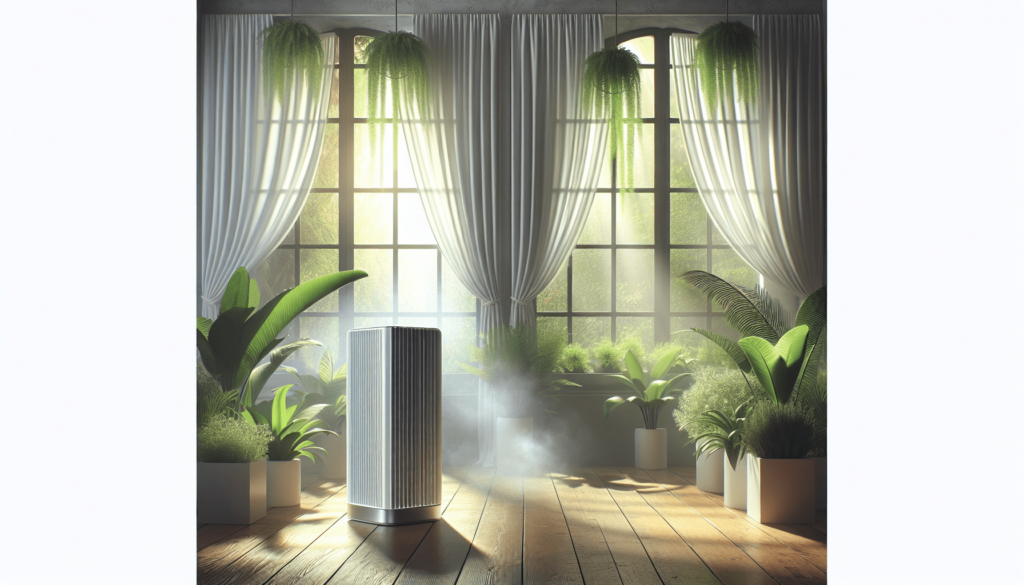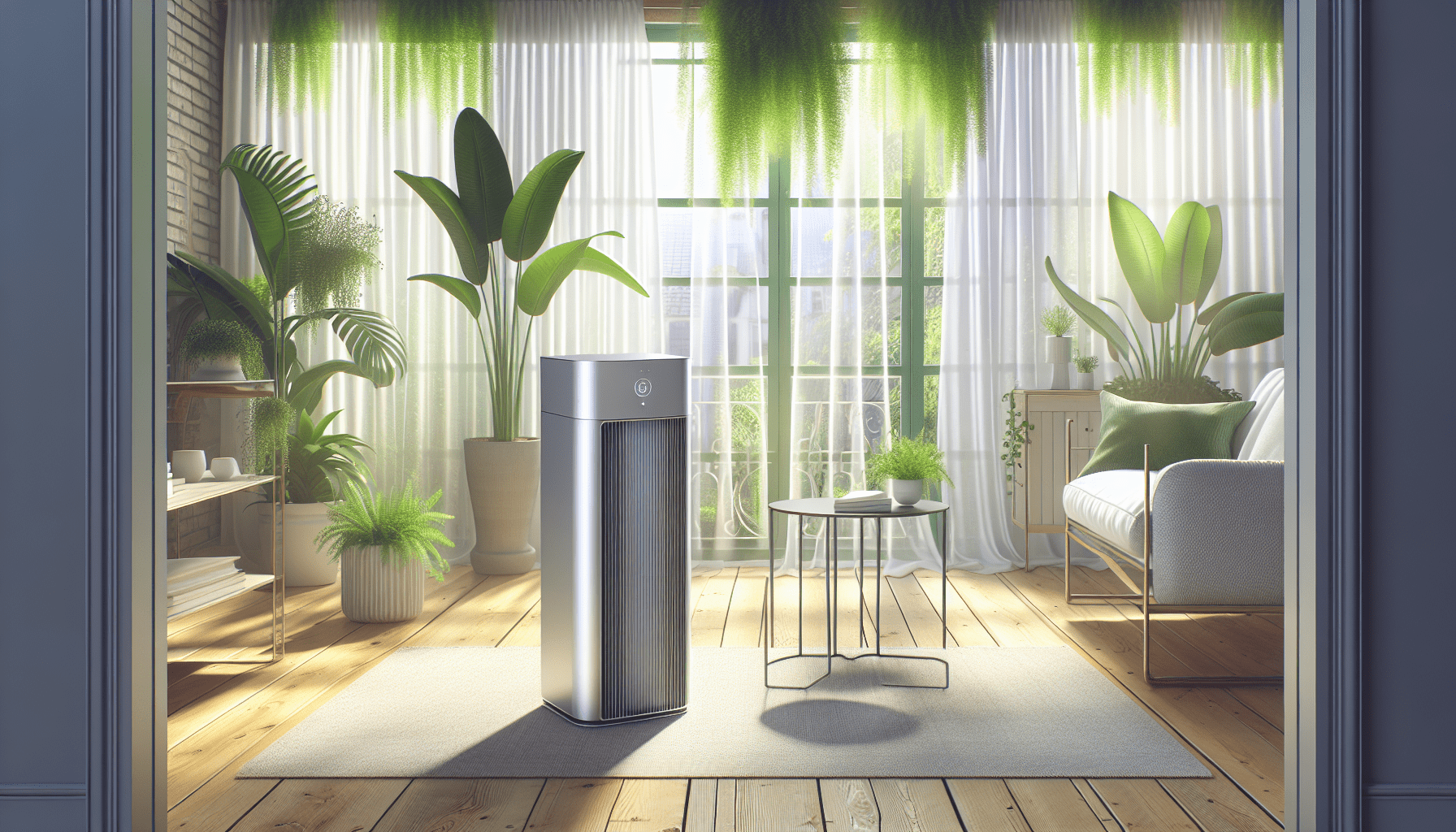Have you ever noticed how seasonal allergies seem to worsen when you’re indoors? Many people don’t realize that the air inside our homes can actually be more polluted than the air outside. Improving the quality of the air you breathe indoors can have a significant impact on reducing allergy symptoms. So, how can you tackle this issue and make your living spaces more comfortable during allergy season?
Understanding Indoor Air Pollution
Indoor air pollution is defined as the presence of physical, chemical, or biological contaminants in the air of residential buildings. It can affect your health, comfort, and well-being. Common sources of indoor air pollution include dust mites, pet dander, mold, and even cleaning products. Recognizing these pollutants is the first step in controlling their presence in your environment.
Common Indoor Air Pollutants
You might be surprised by how many pollutants can be lurking in your home. Here’s a look at some of the usual culprits:
- Dust Mites: Microscopic organisms that live in household dust. They thrive in warm, humid environments and are a common indoor allergen.
- Pet Dander: Tiny, even microscopic, flecks of skin shed by cats, dogs, rodents, birds, and other animals with fur or feathers. These can trigger allergic reactions in sensitive individuals.
- Mold Spores: Mold can grow in damp areas such as bathrooms, kitchens, and basements, releasing spores into the air.
- Volatile Organic Compounds (VOCs): These compounds are emitted from paints, cleaning supplies, and other household products.
Health Impacts of Poor Indoor Air Quality
Poor indoor air quality can have a range of health impacts, particularly for those with allergies. Symptoms might include irritation of the eyes, nose, and throat, frequent headaches, dizziness, and fatigue. Prolonged exposure can lead to respiratory diseases or worsen existing conditions such as asthma.
Simple Steps to Improve Indoor Air Quality
Improving indoor air quality doesn’t have to be a daunting task. With a few straightforward changes, you can make a big difference in the air you breathe.
Keeping Your Home Clean
Regular cleaning can significantly reduce the buildup of dust, pet dander, and other allergens.
- Vacuum Regularly: Use a vacuum cleaner with a HEPA filter to capture small particles. Aim to vacuum at least once a week, and don’t forget about upholstery and curtains.
- Wash Bedding Often: Bedding can be a hotspot for dust mites. Washing sheets, pillowcases, and blankets in hot water weekly can help keep them at bay.
- Declutter: Reducing clutter means fewer places for dust to accumulate. Consider reducing the number of knick-knacks or unnecessary items around your home.
Control Humidity Levels
High humidity can encourage the growth of mold and dust mites. Keeping your home’s humidity level between 30% and 50% can help prevent these allergens from thriving.
- Use Dehumidifiers: They can help reduce moisture in the air, particularly in basements or after a steamy shower.
- Ventilation: Ensure that your home is well-ventilated. Use exhaust fans in kitchens and bathrooms to remove moisture quickly.
Air Filtration Systems
Investing in a good air filtration system can dramatically improve your indoor air quality by removing contaminants from the air.
- HEPA Filters: These filters are highly effective at capturing fine particles like dust and pollen.
- Air Purifiers: Consider an air purifier for rooms where you spend the most time, such as the living room and bedroom.
- Regular Maintenance: Replace furnace and air conditioning filters regularly to maintain their effectiveness.

Natural Ways to Purify Indoor Air
For those who prefer a natural approach, there are several ways to purify your indoor air without relying heavily on technology.
Houseplants
Certain houseplants can improve air quality by filtering toxins and contributing to oxygen production.
- Spider Plant: Known for removing pollutants such as formaldehyde and xylene.
- Peace Lily: Effective at breaking down toxins like ammonia, benzene, and formaldehyde.
- Aloe Vera: Not only beneficial for soothing burns but also effective at removing formaldehyde from the air.
Essential Oils
Some essential oils are thought to have air-purifying qualities and can be used in diffusers to add a pleasant aroma to your home.
- Tea Tree Oil: Known for its antimicrobial properties, it can reduce mold and bacteria.
- Lavender Oil: Besides providing a relaxing scent, it may help to decrease airborne allergens.
Avoiding Common Triggers of Allergies at Home
Awareness of the common triggers can help you avoid unnecessary allergy attacks.
Keep Pets Groomed
If you have pets, their dander can be a significant allergen. Regular grooming and bathing can help reduce the amount of dander they shed.
Choose Hypoallergenic Furnishings
When possible, choose furnishings that are less likely to trap allergens.
- Leather or Vinyl Furniture: These materials don’t harbor dust mites or pet dander as much as fabric upholstery.
- Hard Flooring: Consider hardwood, tile, or linoleum over carpet, especially in bedrooms.

The Role of Regular Maintenance
Regular maintenance in and around your home can further improve air quality.
HVAC System Inspection
Your HVAC system circulates air throughout your home, making its maintenance crucial to air quality.
- Inspections: Schedule regular inspections to ensure the system is functioning efficiently.
- Duct Cleaning: Consider professional duct cleaning to remove dust and allergens that might be hiding inside.
Check for Moisture and Mold
Regularly inspect your home for signs of moisture and mold, especially in less visible areas like basements and attics.
- Repair Leaks: Fix any leaks promptly and consider installing a sump pump to manage basement moisture.
- Mold Removal: If you find mold, it’s essential to clean it up and address the moisture source to prevent regrowth.
Benefits of High-Quality Indoor Air
Improving indoor air quality offers numerous benefits beyond reducing allergy symptoms. Enhanced air quality can lead to better sleep, increased productivity, and improved overall well-being.
Better Sleep
Breathing clean air can significantly enhance your quality of sleep. Reduced allergens lead to fewer disturbances caused by sneezing or coughing.
Enhanced Well-being
Good air quality contributes to your mental clarity and mood, helping you feel more alert and energetic throughout the day.
Long-term Health Benefits
Reducing pollutants indoors can improve respiratory health and decrease the risk of developing chronic conditions related to poor air quality.
Conclusion
Improving indoor air quality involves a series of manageable steps that can lead to a healthier, more comfortable living environment. By understanding the sources of indoor pollutants and implementing practical solutions, you can significantly reduce seasonal allergy symptoms and enjoy a better quality of life. Remember, every small action counts, and progress is made one step at a time.
Quick Reference Table: Improving Indoor Air Quality
| Strategy | Action Steps |
|---|---|
| Cleaning | Vacuum regularly with HEPA filter, wash bedding weekly, declutter spaces |
| Humidity Control | Use dehumidifiers, ensure good ventilation |
| Air Filtration | Install HEPA filters, consider air purifiers, maintain HVAC systems |
| Natural Methods | Add houseplants like Spider Plant, Peace Lily, use essential oils like Tea Tree and Lavender |
| Avoid Triggers | Groom pets regularly, choose hypoallergenic furnishings |
| Regular Maintenance | Schedule HVAC inspections, clean ducts, check for mold and moisture |
By committing to these steps, you’re taking proactive measures to breathe easier and live better. Prioritizing your indoor air quality is an investment in your health and comfort, ensuring your home truly remains a sanctuary from seasonal allergens.
